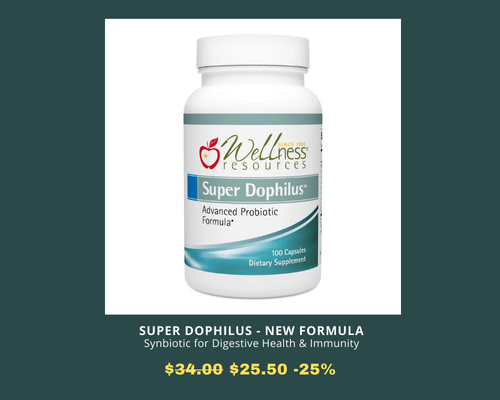Intermittent fasting involves voluntarily abstaining from food for set periods, giving your body a break that may promote cellular repair and reduce inflammation.
Have you ever wondered if changing when you eat could help you feel better? Inflammation is at the root of many chronic aches, pains, and health issues, from joint pain to heart disease. Emerging research suggests that intermittent fasting (IF) – eating only during specific time windows – might help tame that inflammation and improve your health. This article will walk you through how IF works, its impact on inflammation, and tips to get started, all in an evidence-based, reader-friendly way. Let’s dive into the science and motivation you need to take control of your health!
What Is Intermittent Fasting?
Intermittent fasting is not a diet about what you eat, but when you eat. It means cycling between periods of eating and fasting (not eating). During fasting periods, only water or non-caloric drinks (like black coffee or herbal tea) are typically allowed. This approach has gained popularity for its simplicity and potential health benefits. The most common types of IF include:
- Daily Time-Restricted Feeding: Eating all your meals within a set window each day (for example, an 8-hour window like 11 a.m. to 7 p.m., then fasting for the remaining 16 hours) mayoclinichealthsystem.org.
- 5:2 Fasting: Eating normally five days of the week and significantly cutting calories on two non-consecutive days (around 500 calories on fasting days).
- Alternate-Day Fasting: Alternating between days of normal eating and days of either complete fasting or very low calorie intake (often <500 calories).
People often turn to IF for weight loss or improved metabolic health, but it may offer benefits that go beyond the scale. When done correctly, intermittent fasting helps your body enter a “fasted” state that triggers a cascade of biological processes not seen when you’re constantly in a fed state. In other words, giving your body regular breaks from eating can switch on internal repair modes that benefit your cells and tissues.
Why Inflammation Matters
Inflammation is your body’s natural defense response to injury or invaders – it’s how we heal. But when inflammation becomes chronic (persisting even when there’s no acute injury or infection), it can turn into an insidious enemy. Chronic inflammation has been linked to a host of serious diseases, including heart disease, diabetes, arthritis, cancer, depression, and Alzheimer’s .harvard.edu. In fact, many major health conditions that plague us are tied to ongoing, low-grade inflammation in the body. Reducing this inflammation is crucial because it can lower the risk of these diseases and improve overall well-being.
Several factors influence inflammation levels, including diet, exercise, stress, and body fat. Carrying excess weight, especially visceral fat, is known to promote inflammation in the body. Meanwhile, diets high in processed foods and sugar can exacerbate inflammatory processes, whereas diets rich in vegetables, fruits, fish, and healthy fats help fight inflammation. The exciting news is that intermittent fasting might be another tool in our arsenal to combat chronic inflammation – potentially complementing a healthy diet and active lifestyle.
How Intermittent Fasting Reduces Inflammation
Why would what you eat affect inflammation? The answer lies in how fasting gives your body a chance to perform maintenance and healing. When you’re in a fasted state, your metabolism shifts and cells kick-start repair modes. Research from Harvard notes that being in a fully fasted state triggers a host of cellular signals that dampen excessive cell growth and boost cellular repair and recycling mechanisms. In simple terms, fasting prompts cells to clear out waste (a process called autophagy) and strengthen their defenses, including increasing antioxidant levels that combat oxidative stress. These effects can translate to lower inflammation, since oxidative stress and unchecked cell growth are linked with inflammatory diseases.
Crucially, intermittent fasting also improves insulin sensitivity and can promote weight loss. This matters because insulin resistance and obesity are key drivers of chronic inflammation. As one Harvard expert points out, much of chronic disease is driven by underlying insulin resistance and inflammation – so by improving insulin response, fasting may help reduce the cascade of problems that lead to diabetes, high cholesterol, hypertension, and obesity. Indeed, multiple short-term studies have found that intermittent fasting (especially daily time-restricted eating) improves markers of metabolic health. Improvements in blood sugar control and cholesterol not only benefit your heart but also correlate with reduced inflammatory markers in the bloodstream.
Perhaps most exciting, new scientific findings are uncovering direct anti-inflammatory mechanisms of fasting. In a 2024 NIH-supported study, researchers found that fasting increases levels of a compound called arachidonic acid in the blood, which in turn inhibits inflammation by dialing down a key inflammatory pathway (the NLRP3 inflammasome) nhlbi.nih.gov. The NLRP3 inflammasome is like an “on-switch” for inflammation in the body; fasting seems to keep this switch from flipping on so easily. The researchers suggest that regular fasting could help reduce chronic inflammation associated with conditions like heart disease. This gives us a fascinating glimpse into how IF may protect against the very inflammation that contributes to so many illnesses.
Real-world studies are also showing benefits. The Mayo Clinic notes that fasting affects metabolic processes that may decrease inflammation and improve conditions linked to inflammation, such as arthritis, asthma, and multiple sclerosis. Early reports from patients have been promising – for instance, some people with arthritis report less joint pain when practicing IF, potentially because of lower inflammatory chemicals in their bodies. And it’s not just anecdotal: in a year-long clinical trial, healthy adults who followed a daily 16-hour fasting routine (with an 8-hour eating window) saw significant reductions in inflammation. Specifically, their inflammatory markers dropped by over 13% after 12 months of consistent intermittent fasting. Those participants also experienced weight loss and improved cholesterol and insulin levels, showing how fasting can positively remodel your internal health profile acsm.org. While more research is needed, these results are encouraging and suggest that IF can genuinely quiet the body’s chronic inflammatory state.
It’s worth noting that some benefits of IF might come indirectly. By helping with weight loss, fasting reduces excess body fat, which is a source of pro-inflammatory hormones and cytokines. Think of fat cells like tiny factories that can pump out inflammatory signals – shrinking those factories through weight loss can ease the burden on your system. Additionally, many people find that when they eat in a restricted window, they make more mindful food choices. This often means less late-night snacking on junk food and more focus on nutritious meals, which further supports lower inflammation. In short, intermittent fasting gives your body regular rest periods to heal and reduces factors that stoke inflammation.
Pro Tip: To maximize the inflammation-fighting impact of IF, pair your fasting routine with an anti-inflammatory diet during eating windows. Focus on whole foods like leafy greens, berries, nuts, olive oil, and fatty fish, which are known to combat inflammation, and try to minimize processed, sugary, and fried foods that can aggravate it health.harvard.edu. This one-two punch of smart timing and smart nutrition can supercharge your results!
Getting Started Safely and Successfully
Ready to give intermittent fasting a try for its potential anti-inflammatory benefits? Here are some tips to help you get started in a safe, sustainable way:
- Ease into it: If you’re new to fasting, start with a gentle approach. For example, begin with a 12-hour overnight fast (finish dinner by 7 p.m. and have breakfast at 7 a.m.), then gradually extend your fasting window to 14 or 16 hours as you feel comfortable. This gradual ramp-up helps your body adjust and reduces side effects like intense hunger or fatigue in the early days.
- Stay hydrated: Drink plenty of water throughout your fasting period. You can also enjoy calorie-free beverages like herbal tea or black coffee. Proper hydration not only curbs hunger, but it also supports your metabolism and can help flush out toxins. Pro Tip: Sipping on warm herbal tea can be surprisingly satisfying and can help take the edge off cravings during a fast!
- Listen to your body: It’s normal to feel some hunger or low energy when you first try IF, but you should not feel extremely unwell. If you feel dizzy, lightheaded, or ill, break your fast and eat a nutritious meal. Intermittent fasting is a flexible tool – some days you might shorten your fast if your body signals the need. Over time, many people report that their bodies adapt and fasting feels more natural.
- Nourish during eating windows: When it’s time to eat, choose nutrient-dense, anti-inflammatory foods to fuel your body. Lean proteins, vegetables, fruits, whole grains, and healthy fats will give you steady energy and help reduce inflammation. Avoid the temptation to binge on junk food after a fast – overeating or eating high-sugar, processed foods will undo much of fasting’s benefits. Remember, it’s not just about not eating; it’s about eating well when you do.
- Keep a consistent schedule: Our bodies love routine. If possible, fast and eat at around the same times each day (for example, eat between 10 a.m. and 6 p.m. daily). A consistent pattern helps regulate your circadian rhythm, hormones, and digestion, which can enhance the positive effects on inflammation. Consistency also makes it easier to turn IF into a habit rather than a chore.
Lastly, always personalize and consider your individual health needs. Intermittent fasting is safe for many people, but it’s not appropriate for everyone. If you are under 18, pregnant, breastfeeding, have a history of eating disorders, or have medical conditions like diabetes, you should consult your healthcare provider before trying IF. Your doctor or a registered dietitian can help you decide if fasting is right for you and how to do it without compromising your health. And even if you’re healthy, it’s perfectly okay to start slowly and see how you feel – you don’t have to force a schedule that doesn’t fit your life.
Conclusion: A Promising Tool to Tame Inflammation
Intermittent fasting is more than just the latest diet trend – it’s a lifestyle approach backed by growing scientific evidence for health benefits. By giving your body regular breaks from food, you empower its natural healing processes and potentially dial down the chronic inflammation that drags you down. Research has shown that intermittent fasting can lower inflammatory markers, improve metabolic health, and even help alleviate symptoms of inflammatory conditions. While it’s not a magic cure-all (nothing is!), IF is a promising tool we can use alongside a healthy diet, exercise, and stress management to support our overall wellness.
Why not give your body the rest it needs to thrive? Small changes – like closing the kitchen after dinner or skipping that late-night snack – could translate into big rewards for your health and how you feel. As always, approach fasting mindfully and listen to your body. The journey to reduced inflammation is a marathon, not a sprint, and intermittent fasting might just be the training partner that helps you go the distance in better health.
Ready to Take the Next Step?
If you’re inspired to harness intermittent fasting for better health, start today with simple, sustainable actions: pick a 12:12 or 14:10 eating window, build meals around anti‑inflammatory whole foods (colorful plants, lean protein, healthy fats), and strength train 2–3×/week to protect muscle. For a deeper dive into how movement supports longevity, read our article: “Can Exercise Reverse Your Body’s Aging Clock?” And as always, check in with your healthcare provider—especially if you have diabetes, are pregnant or breastfeeding, or have a history of eating disorders—before making changes. Your strongest, healthiest self is built one intentional choice at a time.












